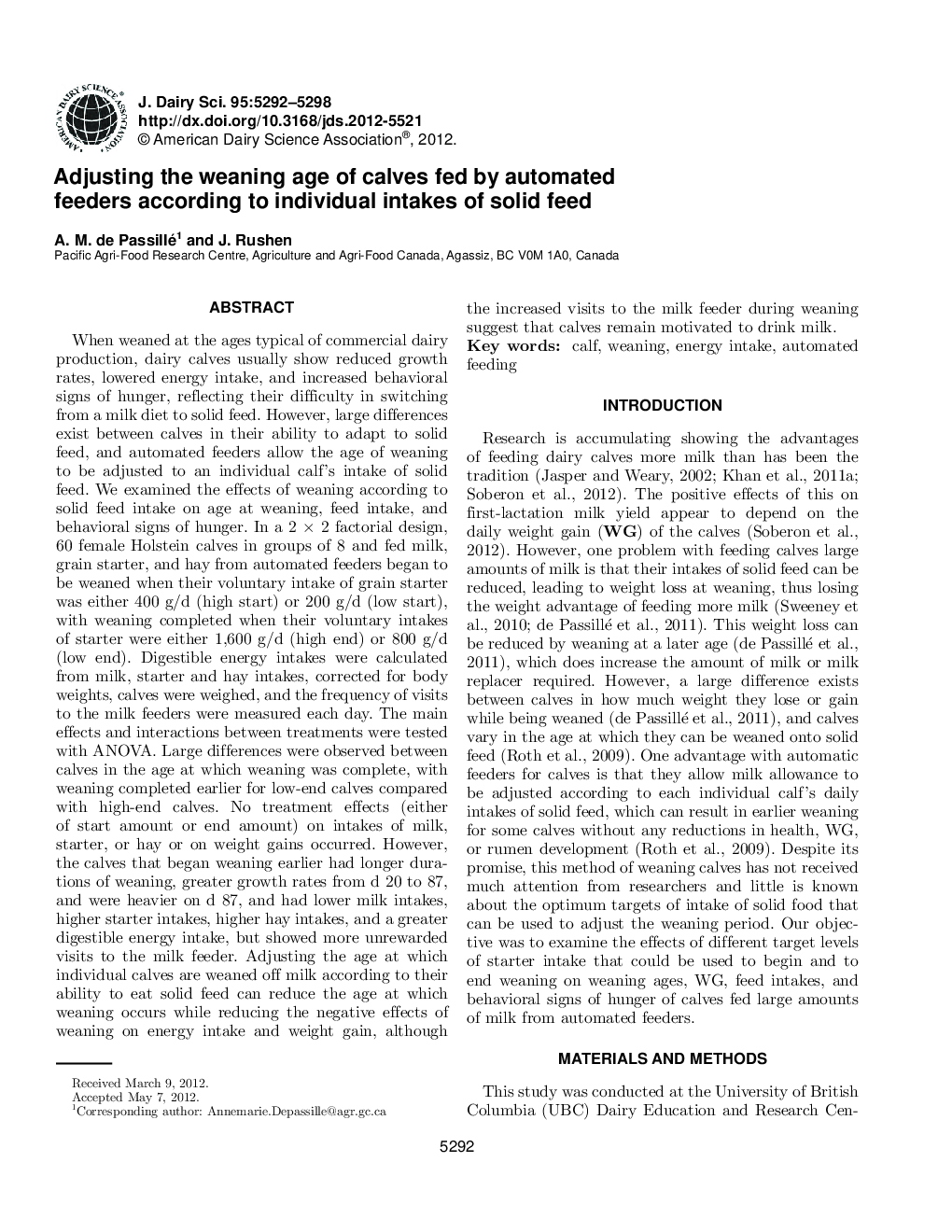| Article ID | Journal | Published Year | Pages | File Type |
|---|---|---|---|---|
| 10976840 | Journal of Dairy Science | 2012 | 7 Pages |
Abstract
When weaned at the ages typical of commercial dairy production, dairy calves usually show reduced growth rates, lowered energy intake, and increased behavioral signs of hunger, reflecting their difficulty in switching from a milk diet to solid feed. However, large differences exist between calves in their ability to adapt to solid feed, and automated feeders allow the age of weaning to be adjusted to an individual calf's intake of solid feed. We examined the effects of weaning according to solid feed intake on age at weaning, feed intake, and behavioral signs of hunger. In a 2Â ÃÂ 2 factorial design, 60 female Holstein calves in groups of 8 and fed milk, grain starter, and hay from automated feeders began to be weaned when their voluntary intake of grain starter was either 400Â g/d (high start) or 200Â g/d (low start), with weaning completed when their voluntary intakes of starter were either 1,600Â g/d (high end) or 800Â g/d (low end). Digestible energy intakes were calculated from milk, starter and hay intakes, corrected for body weights, calves were weighed, and the frequency of visits to the milk feeders were measured each day. The main effects and interactions between treatments were tested with ANOVA. Large differences were observed between calves in the age at which weaning was complete, with weaning completed earlier for low-end calves compared with high-end calves. No treatment effects (either of start amount or end amount) on intakes of milk, starter, or hay or on weight gains occurred. However, the calves that began weaning earlier had longer durations of weaning, greater growth rates from d 20 to 87, and were heavier on d 87, and had lower milk intakes, higher starter intakes, higher hay intakes, and a greater digestible energy intake, but showed more unrewarded visits to the milk feeder. Adjusting the age at which individual calves are weaned off milk according to their ability to eat solid feed can reduce the age at which weaning occurs while reducing the negative effects of weaning on energy intake and weight gain, although the increased visits to the milk feeder during weaning suggest that calves remain motivated to drink milk.
Keywords
Related Topics
Life Sciences
Agricultural and Biological Sciences
Animal Science and Zoology
Authors
A.M. de Passillé, J. Rushen,
